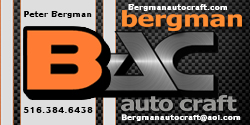65CopCar
Well-Known Member
I believe having 2 different set points with one alternator supplementing the other once the main alt maxes out is a viable solution.Thanks, I believe we are both on the same page here, this is not a simple straight forward question. #4 above zeroes in on that. My initial thinking was to have two slightly different voltage set points, the engine driven alternator always in circuit with engine running, being of lesser current output, with its VR set slightly higher and the larger current driveshaft (DS) driven alternator with a VR set slightly lower, to kick in when voltage started to drop when the current began to exceed the engine driven alternators output.
That begs the question, does the engine driven alternator effectively go idle charging wise when it sees the enhanced voltage from the DS alternator comes online?
And does the engine driven alternator come back online smoothly when the DS driven alternator surpasses its output rating and/or the DS/car stops?
I fully understand actual testing will give the final answer here I suspect, unless a case is made this idea is determined to be dead in the water.
"Smoothly" above is only one of a number of words that might apply here.
The other detail not mentioned with my recent added pic above, that alternator is effectively rear mount, but really engine driven, as it is FW driven.
Yes - I believe the other alternator will just idle as the alt diodes prevent any DC backfeed and the AC ripple will be too small to worry about. And yes - I believe the alternator would come back on "smoothly". I don't think there would be any concern there. You have quite a bit of inductance in the alternators both in the field and stator, so nothing changes instantaneously. I don't think you have any concern there.
I think it might just work well, but like you said, only testing will tell for sure.
As I stated earlier, an alternator is a 3 phase synchronous generator, and then you have diodes to convert the AC to DC. In a power house, you have the same concept as what you are trying to do. In a power house you have multiple 3 phase synchronous generators on the same bus running in parallel including with the utility line. There are reactors to balance the load across the different sources and to limit any instantaneous current changes. You have to have reactors in this scenario because you have an almost infinite instantaneous energy source when connected to the utility line. A car alt is not the same because you don't have an infinite energy supply - the alt just harmlessly goes into magnetic saturation just like when you say an alt maxes out on output.
















